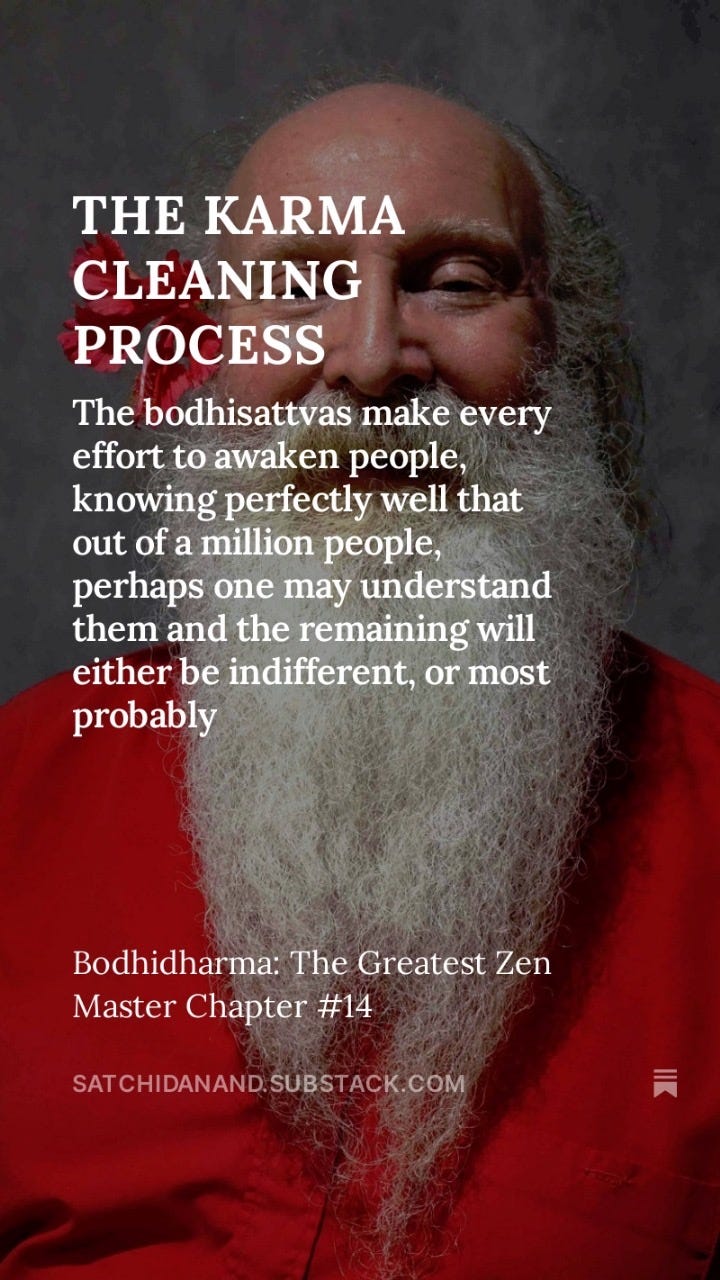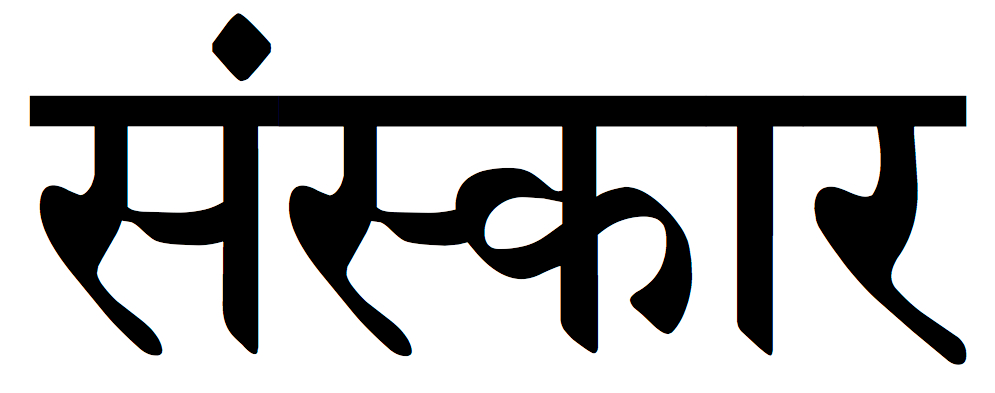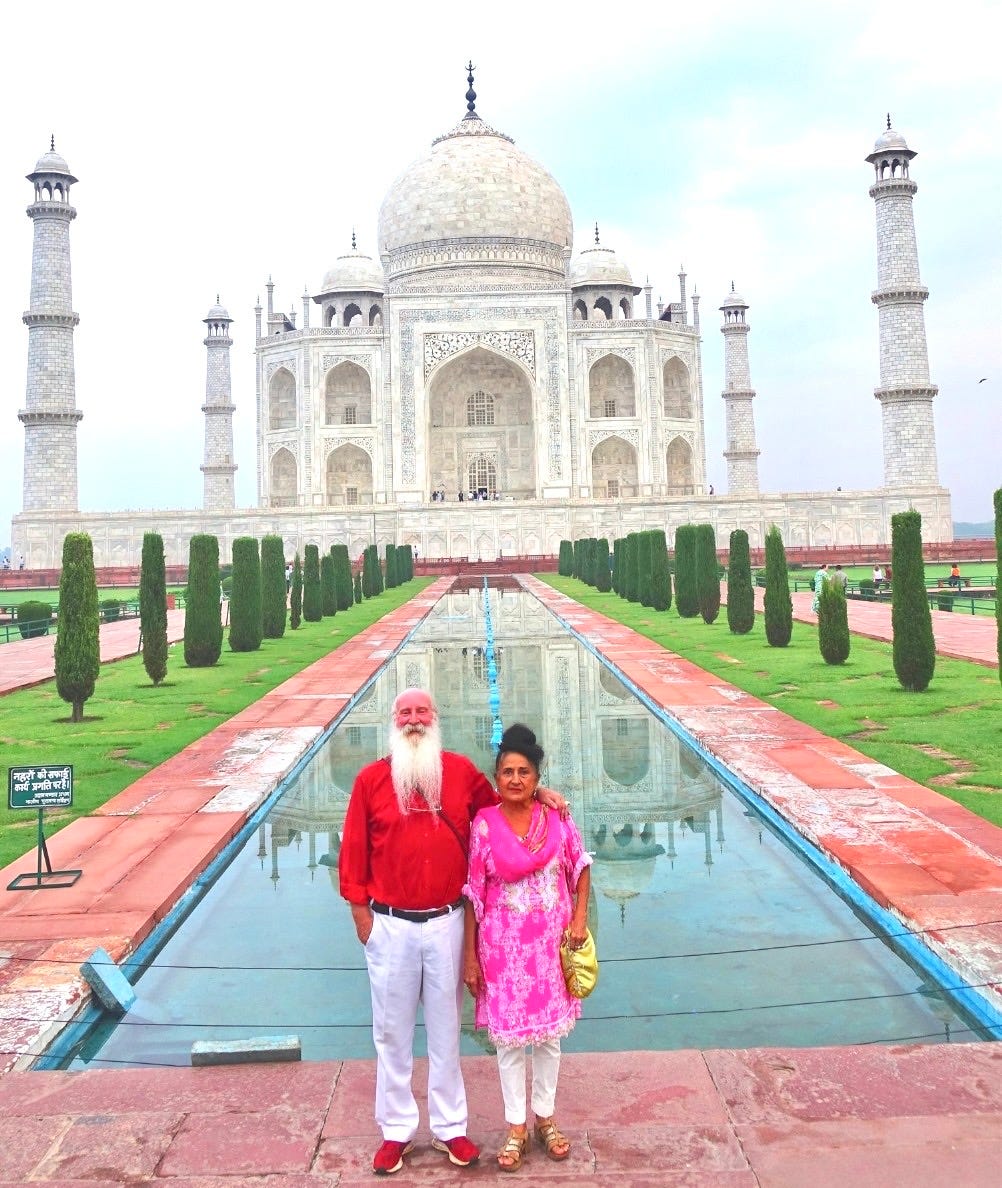1.12. Part 2-Mind Computer
“Now,” the Zen Monk said, fixing his eyes on mine, “let’s return to the question. What is your True Self?” I felt the question sink into me like a stone dropped into the ocean, and its ripples spread.
11. Islander
“The voice on the phone was….,” while I was thinking about the voice on the phone, I crossed the border between Germany and the Czech Republic. The sun had lost some of its enthusiasm. It was about 4 pm. There was neither a gate nor passport control at the border; it was just an open road. The surrounding forests of cypress and cedar continued. The only change was a road signage. Black letters in yellow in Germany turned to white letters in blue in Czechia. The road I was on became Route 7 instead of Route 174.
As someone born and raised on an island, crossing borders over land is amazing magic. Moreover, I can cross without any effort by pressing the gas pedal. I remembered a conversation I had at supper last night. By strange coincidence, I was talking about travelling by camel and horse to dozens of countries on the Silk Road. We, Japanese Islanders, can't go abroad sitting on the backs of camels or horses. We have to buy a plane ticket. In the old days, we needed ships.

Travelling by ship was extremely difficult, with unpredictable weather patterns, high risks of storms, shipwrecks, and piracy, and it took months. It took time, money, and lives until the Nara and Heian periods (710-1185 AD). Ship designs became more sophisticated, with larger hulls and the introduction of sails. Sailors adopted Chinese navigational techniques and equipment, such as the magnetic compass. Instead, our island nation was protected by the deity of storms and seas. Unlike other gods who embody grace and mercy, he is often depicted as a violent and impulsive deity.
12. Kamikaze
During Japan's Kamakura period (1185–1333), which was a significant era in Japanese history marked by the emergence of the “samurai:侍 class” and the establishment of the ”Kamakura shogunate”, Japan's first military government in the Kanto region (where Tokyo is located), not in Kyoto Kansai region. Japan faced two formidable invasions by Mongol forces under Kublai Khan in 1274 and 1281. According to Japanese historical documents, Japan was on the brink of defeat each time, but a miraculous event intervened: the divine wind known as “Kamikaze”.

Unlike myth, these “Kamikaze” stories shouldn’t be taken with a grain of salt. Interestingly, these supernatural forces were recorded from the point of view of Mongolian invaders. It is written in “Travels of Marco Polo”, my favourite bedside book. In his travels, Marco Polo recounted the Mongol invasions of Japan, providing a unique perspective on these historical events. According to Polo, Kublai Khan, the Mongol emperor, was determined to conquer Japan and dispatched a massive fleet to subdue the island nation in 1274 and again in 1281.
From the Mongolian viewpoint, the initial invasion in 1274 seemed promising. Under Kublai Khan, the Mongol forces were highly organised and adaptable, but they were feared for their exceptional cavalry tactics and military strategies. They effectively utilised speed, mobility, and psychological warfare, enabling them to conquer vast territories. The Mongols reached as far as modern-day Hungary and Poland during their invasions in 1241-1242, causing widespread devastation. So, they were confident they could overpower the Japanese. However, as they approached the shores of Japan, they were met with an unexpected and violent storm. The weather turned against them, causing ships to capsize and scattering their forces. The Mongols widely interpreted this catastrophic weather event as a dire omen.
Despite their formidable strength, the Mongols faced severe losses; the storm ravaged their fleet, and the invasion ultimately failed. Kublai Khan regrouped and launched a larger invasion in 1281 with an even stronger armada. Yet again, as the Mongol forces poised for a decisive assault, they were struck by another violent storm, believed by the Japanese to be the divine wind, “Kamikaze”, sent by the god of storms and seas. This second disaster devastated the Mongolian fleet, leading to the loss of thousands of soldiers and ships.
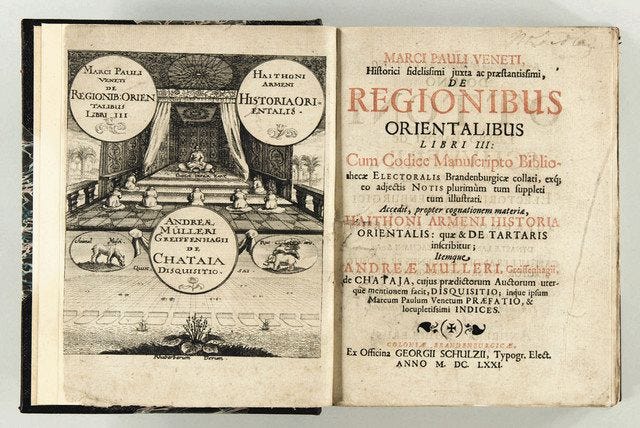
From the Mongolian perspective, these defeats were tragic failures and bewildering occurrences attributed to supernatural forces. Marco Polo’s accounts highlight the Mongols' respect for the power of nature and divine intervention, portraying their shock and disbelief at being thwarted by storms they could not control. This narrative underscores the significant cultural clash and illustrates how the same events are seen through vastly different lenses—one of determined conquest and another of divine protection.
Just then, a wind blew through the open car window. It told me I had reached the top of Mt. Svatého Šebestiána of the Ore mountains. Let’s save the story of this violent and impulsive god of the sea and storms for the next chapter, shall we? I had to focus on the small path to the hill, my “Glastonbury Tor in Czechia”. I couldn’t get lost like I did on the way to Munich.
13. Mind Computer
It began with familiar terrain and led me to a favourite hill. I carefully turned left from the German side onto a narrow road and focused on the winding road ahead. As the hill came into view, a wave of relief washed over me. There is something about this place that makes me feel alive.
I parked at the foot of the hill and opened the door to release my dog, Inca, joyfully jumping out of the rear seat, running around and sniffing the earth. I followed her, taking off my shoes and touching my feet to the ground. With each step, I felt the earth's grounding energy. At the summit, the vast landscape stretched before me, but my thoughts were focused inward, and my thoughts shifted to the mysterious person who had called me when I had just arrived at the English Garden in Munich.
“Who on earth was he?”
This question haunted me, and at the same time, “Who on earth can answer such an obscure, rather weird question?” Another question chasing the first question. During such an internal argument, I’d received an email from my meditation teacher, Sachidand, as if he knew about my mind's fluctuations. He wrote that I can ask any question to my mind computer, which will answer any question I pose.
What is a mind computer?
I heard this word from Satchidanand in Spain in the summer of 2004 while grappling with the seven-step chakra purification process in Level 2 of Energy Enhancement Meditation. With numerous blockages scattered across my chakras, I found it challenging to fully engage with this rather long process. My concentration wavered, and discomfort radiated through my legs, sparing my efforts.
The whole of Energy Enhancement is as a means to remove energy blockages to achieve perfect health and immortality. The following practices will exponentially increase and direct your energy.
The Twelve Initiations of Energy Enhancement Prana Course can be mastered in parallel with Level One or higher of Energy Enhancement and by increasing your health, your prana and your ability to direct prana to remove energy blockages will benefit and enable all four Energy Enhancement Levels. By Satchidanand
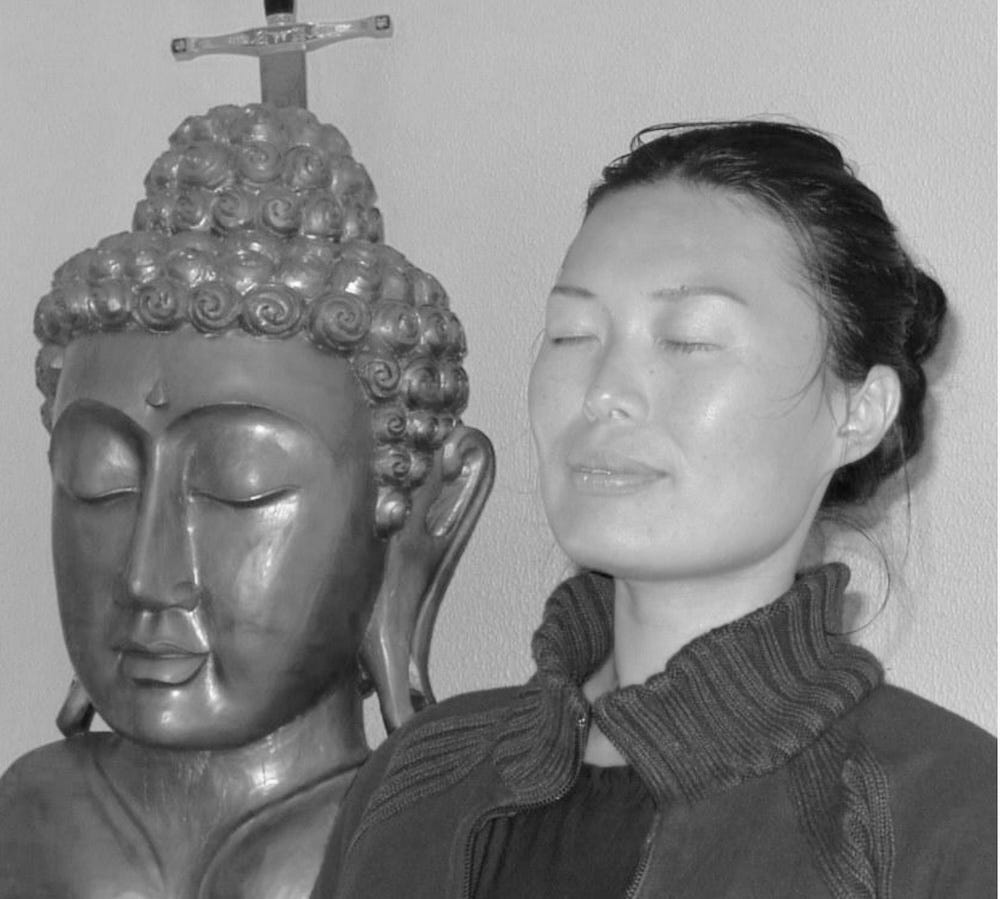
I was a quick learner in Level 0 and 1, using my psychic vision and honing my ability to locate these blockages, whilst applying the seven-step process to blockages in Level 2, I became a bit slow. Steps 1 to 3 of the seven-step process became second nature, but the fourth step threw me for a loop—what exactly is a “controller of the blockage”? Stumped, I bypassed step 5, focusing on purifying ten chakras above my crown, and then proceeded to step 6, liberating ten to one million chakras, and finally, step 7, where the threshold reached from one million to infinity. These later steps seemed easier for me. My imagination helped me to feel more intuitive; the imagery of an ethereal connection extending above my head sparked a newfound sense of ease.
Level 2 Energy Enhancement Meditation Course:
Initiation 1- 7 Step Process (Removing blockages from the Antahkarana first. From the infinity of chakras above the head. From the infinity of chakras below the base chakra.)
Initiation 2 - Removing Blockages from the Body
Initiation 3 - Healing Your DNA
Initiation 4 - Removing Blockages from the Chakras
Initiation 5 - Removal of Thoughtforms from the Body Layers / Aura
Initiation 6 and 7 - The Karma Clearing Process | This Lifetime & Time In the Womb
by Satchidanand
After one invigorating Level 2 morning session, I shared my struggle with Satchi. He introduced the concept of the mind computer, asserting that our minds function like supercomputers. He suggested I ask where the blockage controller is on my minicomputer. I was blank, with “What is he talking about?” He continued that by tapping into this potential, he could effectively process all seven steps simultaneously, even addressing multiple blockages simultaneously. He stressed the significance of thoroughness: "What needs to be grounded must be grounded."
Since then, this idea has intrigued me: how expansive is my mind? What myriad functions does it perform? It's a repository of the unseen—thoughts, emotions, physical pains, and, yes, even those elusive blockages. It struck me that my mind is akin to a supercomputer, capable of housing and processing countless hidden elements. Might I delve deeper, consciously engaging with this wealth of memories and experiences?
Just a few weeks ago, I erected my spiritual tower in a power spot where I could truly connect to energy from nature. I personalised it with my painting, which symbolised my higher perspective at the top and my calligraphy, which harnesses the power of the word Tower, at the base. They anchor it to my identity. I felt a strong connection and sense of home to it; this is my tower. Interestingly, it allowed me to tap into it from anywhere and led me to realise that, for me, understanding the spiritual realm hinged on rooting it in my personal experiences—deconstructing, digesting, and personalising these connections, much like my sacred tower.
In this light, I began to view my spiritual tower as my Mind Computer. In Indian philosophy, this concept aligns with the word "Antahkarana," a core idea in Vedānta and Yoga, comprising four essential components:
MANAS (mind)
BUDDHI (intellect)
CHITTA (conscious/subconscious memory)
AHAMKĀRA (ego)
To fully embrace this framework, I know I must first personalise each function in relation to my mind. Otherwise, these unfamiliar foreign words are Greek to me. Therefore, I spent these two weeks in the English Garden in Munich, walking, sitting, reading, studying, and meditating to explore these components of my Antahkarana.
14. Exploring the Functions of My Mind Computer: Unpacking Manas, Buddhi, and Chitta
MANAS is mind, so it should be the main function of my mind computer. Theoretically, I can call it “my MANAS computer,” which is responsible for thoughts, emotions, desires, feelings, and sensory perceptions. It is said that MANAS is the connecting link between the subconscious and the conscious. In my case, the water at the bottom would be the realm of my subconscious, and I could reach there through my Antahkarana. It all makes sense to me. Antahkarana is the mind computer.
It all clicks into place. I envision MANAS flowing through all seven chakras in my body and even extending to the various chakras beneath my root chakra, Muladhara, including the Kundalini and Earth chakras, guiding me deeper into the waters of my subconscious.
Moreover, MANAS has another incredibly useful function. It files away all impressions and perceptions from the external world in the “storehouse of memories” with neither any judgements nor choices. It brings them out again for the appropriate reason. It sounds cleverer than I am (I often struggle to find the file I want in my Macbook).
BUDDHI is intellect. It plays a crucial role in assessing and filtering what enters our consciousness and what is relegated to our subconscious. Then, BUDDHI helps shape our mental landscape, guiding our actions based on the impulses it receives unless we lose control of our MANAS.
I envision BUDDHI as my higher mind, residing in the Soul chakra above my crown chakra, Sahasrara, which works as a receiver from the Soul chakra. For me, this Soul chakra is the place where my future self lives with released angels after purifying the blockages. I imagine that there is an angel trapped in the core of each blockage, and I help her release by applying the Seven-Step process. Most of the time, angels are very happy to be purified and free, so if I ask them to stay in my Soul chakra to make it grow stronger, they agree. I believe that one day, my future self will have enough angels, and she will become my higher self. So far, my imagination and belief have helped me to meditate.
Then we have CHITTA, often referred to as the subconscious mind. This mind encompasses conscious and unconscious elements, holding memories from this lifetime beyond previous and next ones and influencing my behaviour and thought patterns. Within CHITTA lies a fascinating function called “Samskaras”—the latent impressions, impacts, and imprints from past experiences that shape our current reactions and tendencies.
It’s as if Samskaras form the foundation of my Karma. By coordinating with these impressions, CHITTA interacts with my conscious thoughts, guiding my instinctive and emotional responses based on the rich tapestry of experiences stored in my subconscious. I see CHITTA as the water at the bottom of my Antahkarana, a reservoir of depth and insight.
I understood it easily up to this point. In particular, the role of each in memory is interestingly consistent with modern ideas of how human memory works. Suddenly, it struck me: perhaps by understanding how human memory works, I could also clarify the interplay of these ancient concepts, which mirror how our “mind computer” functions.
That thought brought me back to a fascinating book I read five years ago: Joshua Foer's Moonwalking with Einstein. The book is a deep dive into the world of memory athletes and mnemonics, blending science with storytelling. It shows how our minds can be trained to remember vast amounts of information using techniques as old as the ancient Greeks. Inspired, I started self-studying human memory and have been experimenting with these techniques ever since.
What intrigued me most was this: could these methods take me deeper—not just into the recesses of this lifetime’s memories but into past lives in Chitta as well? I had this intuitive hunch that mastering memory could help me unlock karmic patterns, removing them like old files clogging my mind computer. According to Energy Enhancement Meditation, clearing karma is Level 3. I’m currently wrestling with Level 2, and this realisation feels like it might be the breakthrough I need to ascend to the next stage of my spiritual journey.
Level 3 - Energy Enhancement Meditation Course:
Initiation 1- Karma Clearing from Past Lives
Initiation 2- Karma Clearing of the Future
by Satchidanand
It won’t be easy, but perhaps if I explain my Antahkarana—my personal bridge between worlds and memories—in my own way, we can uncover something profound together. Shall we?
15. What is Mnemonics?
Mnemonics are memory aids that help individuals remember information more easily. They work by creating associations or using techniques that make the information more memorable. Some techniques have been invented. Here are some key techniques of mnemonics:
Types of Mnemonics
Acronyms: Creating a word using the first letters of a series of words. For example, HOMES is an acronym that refers to the Great Lakes: Huron, Ontario, Michigan, Erie, and Superior.
Acrostics: Forming a sentence where the first letter of each word corresponds to the first letter of the items to be remembered. For example, “My Very Educated Mother Just Served Us Noodles” is used to remember the order of planets: Mercury, Venus, Earth, Mars, Jupiter, Saturn, Uranus, and Neptune.
Chunking is the process of breaking down large amounts of information into smaller, more manageable units (chunks). For instance, people may remember a phone number as 123-456-7890 instead of 1234567890. We all use this technique.
Rhymes and Songs: Setting information to a rhyme or melody can enhance recall. For example, the rhyme “In fourteen hundred ninety-two, Columbus sailed the ocean blue” helps us remember the year Columbus discovered America.
Visual Imagery: Create vivid mental images about the information you want to remember. For example, imagining a “giant elephant” for the word “elephant” can help reinforce the memory. It works well for me. I probably use it to find blockages through chakras.
Method of Loci: This ancient technique involves visualising a familiar place and associating items to be remembered with specific locations within that place, effectively creating a "memory palace." This is the one I am trying to do for my Antahkarana. I've already created my "memory palace" a few years ago. So, I am trying to connect it to my Antahkarana or reconstruct it for Antahkarana.
Eventually, I got a bigger picture of what I had been trying to do for two weeks in the English Garden. To create it properly, let me link the type of human memory to the Manas, Buddhi, and Chitta of Antahkarana.
16. What are Memories?
Memories are fascinating and complex aspects of human experience. They can be broadly categorized into a few types, each serving different purposes:
Sensory Memory is the briefest form, lasting only a few seconds. It is associated with the raw input of our senses and helps us process sensory information. This is exactly what Manas does. Because MANAS is all about the here and now, actively processing incoming sensory information and thoughts. It’s dynamic and constantly engaged with the world around me—exactly what I experience every minute of the day.
Short-term Memory, also known as working memory, can hold a limited amount of information (typically about seven items) for a short period (around 20 to 30 seconds). It's vital for tasks like problem-solving and reasoning. Manas also seems to be responsible for this. Manas captures sensory inputs and immediate perceptions, allowing me to react and make real-time decisions within 30 seconds.
Long-term Memory can store an infinite amount of information over a longer duration, ranging from days to a lifetime. It is divided into two types: Implicit Memory and Explicit memory.
Implicit Memory (or non-declarative memory) involves skills and tasks we can perform without conscious recall, such as riding a bike or playing an instrChitta is probably, CHITTA is responsible for it.
Explicit Memory (or declarative memory) includes facts and events that we can consciously recall. It’s further divided into episodic memory (personal experiences) and semantic memory (general knowledge). I believe that this is CHITTA’s function.
Till these are the realm of memory as science understood it. And now, let me take you further. CHITTA holds a mysterious function, Samskaras.
Samskaras is the storehouse of impressions from past experiences—not just this lifetime but all past lives. It gathers both positive and negative memories, layer upon layer, across time and generations. No, across all past lives. These impressions are retained deep within, influencing the subconscious and shaping my reactions based on past conditioning, often without conscious awareness. Isn’t it mysterious?
17. How does memory form and retrieve?
Memories are formed through a process called encoding, where information is transformed into a format that can be stored. Retrieval is the process of recalling those memories when needed. We must note that both encoding and retrieval can be influenced by many factors, including emotions, context, and even the passage of time.
Emotions play a crucial role in memory. Events that are emotionally charged are often remembered more vividly and for longer periods. This phenomenon can be attributed to the involvement of the amygdala, which interacts with the hippocampus (the region of the brain responsible for forming new memories). So, theoretically, if we recall the emotion of past incidents that create trauma in our current lives or formed Karma in our past lives, we can retrieve it and remove it with the seven-step process. As I mentioned before, this is Level 3 in EE meditation.
According to CHITTA’s function of shaping how I react, our memories significantly shape our identities. They inform our beliefs, values, and behaviours. They create a narrative of our lives, connecting past experiences to our present selves.
Furthermore, explicit memory of long-term memory contains semantic memory (general knowledge). Therefore, cultural contexts or family traditions can also influence how memories are formed and recalled. Collective memories shared within communities and families can foster a sense of belonging and identity, shaping both personal and group, as well as positive and negative narratives.
How many blockages, traumas, and negativities are stored in my subconscious?
How deep would my water be at the bottom of my Antahkarana?
Yet, it was not finished. There is one more function in Antahkarana. It is AHAMKĀRA.
18. What is the last function, AHAMKĀRA?
AHAMKĀRA literally means “I am the doer.” It refers to the ego, the sense of individuality, self, or "I-ness." The ego is the aspect that identifies with the body, mind, experiences, and thoughts. It is the psychic authority of our consciousness and unconsciousness. This ego creates a sense of separation from others and the universe—the feeling that I am different from others.
It seems all makes sense to me. However, surprisingly, this sense of separation is an illusion.
Because Vedānta philosophy, which is also the philosophy of Yoga, teaches us to see the unity – God – behind the variety of appearances. If the ultimate goal is enlightenment, union with God, or becoming one with Him, then it can be said that the greatest wall that stands in the way of this is AHAMKĀRA, the ego, because it is said that all our feelings, perceptions, ideas and desires are inextricably linked to AHAMKĀRA.
The great psychic authority of our consciousness and unconsciousness, the ego, creates the illusion that we are autonomous from all the other independently existing individuals. We must persuade this authority to agree that his creation is an illusion. This is how to overcome this greatest wall before enlightenment; we must accept this reality in which the ego, the sense of individuality, and the self of I-ness are illusions, not just rationally, but realise it within our consciousness. Isn’t it possible?
Yes, it is possible! Satchidanand said.
To achieve this, he and his partner Devi created Level 3 Initiation 3, 4, and 5 in the Energy Enhancement Meditation Course.
Level 3 - Energy Enhancement Meditation Course:
Initiation 3- Shadow Work | Inner Children | Soul Splits
Initiation 4- Grounding of Emotions
Initiation 5- Removing Energy Vampire Strategies
by Satchidanand
At that moment, the wind arose, like it was throwing me a curve ball. It triggered my memory, which is CHITTA. I heard a similar story before, and I felt the same logical barrier. I followed this sudden emotion to recall it in my CHITTA.
19. Protagonist, “Shujinkou: 主人公”
I remember the feeling vividly, like I had dropped into a paradox. It connected to a story I once heard from a Zen monk in Kyoto, taking me back to 2005, shortly after I met Satchidanand.
This story feels important like a thread tying everything together. It’s evidence, in its own way, that everything is connected—united, even. Perhaps it seems one of the countless signs that all things are linked to God, woven into the same fabric, at least for me. To recall the monk’s words, I closed my eyes and accessed my memory palace. I retrace my steps to that sacred space, descending deeply into the corridors of memory.
Yes, I found this Zen temple in my mind. Now, I observe myself from a higher place while listening to his speech.
It began after a meditation session in the Zen temple, during which the monks explained Buddhism's 108 earthly desires. The monk then turned to me, his gaze steady yet gentle, and asked,
“Do you know the word Shujinkou:主人公?”
I hesitated at first, then nodded, saying, “Yes.” He asked again, and I replied with more confidence that it meant Protagonist, as I could feel the vibration of my voice resonate in the room—a sense of positivity filling the space, mingling with the sunlight that warmed the meditation room.
“Shujinkou, a protagonist,” he said, “is a Zen word. Do you know what it truly means? In Zen Buddhism, the protagonist refers to the Original Self or the True Self. But what is this True Self? It is the self you were born with, the essence of who you are before the family, society and world shape you."
“As we live, we are influenced by countless things—experiences, desires, fears, relationships. Over time, these layers cover and obscure the True Self. The word protagonist, shujinko:主人公, in Japanese, serves as a reminder. It calls us back to what we were born with, back to the purity of the True Self.”
I was listening intently as he continued. “Long ago, in the Tang Dynasty of China, from 618 to 906 AD, there was a Zen monk named Ruiyan. In Japanese, we call him Zuigan. Every day, he would sit in the lotus position upon a rock and call out to himself: ‘Hey, Shujinko!’ And then he would answer himself: ‘Yes!’”
I was listening intently as he continued. “Long ago, in the Tang Dynasty of China, from 618 to 906 AD, there was a Zen monk named Ruiyan. In Japanese, we call him Zuigan. Every day, he sat in the lotus position upon a rock and called out to himself: ‘Hey, Shujinko (Protagonist)!’ And then he answered himself: ‘Yes, I am!’”
The monk smiled faintly and said, “This story is recorded in a classic Zen Buddhist text called the Gateless Barrier (or Mumonkan). It contains 48 paradoxical anecdotes or riddles to provoke deep thought and enlightenment. The "gateless" aspect refers to the idea that true understanding transcends the logical barriers of thought, inviting practitioners to confront the essence of their own minds and experiences directly. These koans challenge perception and encourage a direct encounter with reality, often leading to unexpected insights. The gateless refers to the fact that true understanding has no barrier. It requires no door to pass through—it simply is."
“However,” he continued, “the transmission of these teachings faced interruptions in China. They weren’t preserved with the same significance there. However, in Japan, these teachings found fertile ground after the Zen master Mumon Ekai (1207-1298) returned to Japan with the Gateless Barrier (or Mumonkan) from the Song Dynasty in 1254.
I imagined he brought this text back, perhaps carried by a Japanese junk boat with the divine wind, kamikaze.
“Now,” the Zen Monk said, fixing his eyes on mine, “let’s return to the question. What is your True Self?”
I felt the question sink into me like a stone dropped into the ocean, and its ripples spread through my mind. The monk said, “To find your True Self is no simple task. It is like being dropped into the vast ocean. The currents of experience, memory, and thought pull you in every direction. At first, it may seem impossible to navigate.”
“But the answer lies in embracing this ocean. Let go of the surface distractions, dive deep, and confront what lies within. Only then can you begin to see the Shujinko—the protagonist of your own story—emerge. And that is to be expected because there is no such thing as a true self. We think it exists when it doesn't;
In other words, it is an illusion.”
If there is no such thing, was the monk questioning himself?
Perhaps the monk was questioning himself because he understood this paradox—seeking something that doesn’t tangibly exist. If you are on a journey to “find yourself,” you may not even realize that this pursuit itself can become a trap, an illusion that promises clarity but only deepens confusion. The idea that we are born with a fully formed True Self is misleading.
Look at nature: Many animals are capable of independence almost immediately after birth. Humans, on the other hand, are born immature and require years—sometimes decades—before they can truly stand on their own.
This immaturity isn’t a flaw. In fact, it’s both a vulnerability and a strength. It allows us to adapt to our environment. If we were born with a fixed and unchangeable True Self, our lives would be predetermined, and we would only be able to live in one specific way. But that’s not the case. Our flexibility and openness to growth allow us to survive and thrive in different circumstances.
We are born incompletely to grow, adapt, and evolve. Through our experiences, relationships, and contributions to the world, we develop skills, discover our strengths, and refine our character. We are not born with a perfect self; rather, we are born with the capacity to become many things shaped by the choices we make and the paths we take.
Even if there isn’t an “original self,” each person has certain abilities and qualities that emerge naturally, often from a young age. These abilities set us apart, forming the foundation upon which we build our lives. Over time, as we navigate life, meet others, and find our place in society, we gradually grow into our unique version of a True Self. It’s not something we’re born with—it’s something we become.
Oh, my God! AHAMKĀRA(Ego) and Shujinkou(Protagonist) are the same. I screamed and opened my eyes.
20. Joy of Inca
My eyes caught Inca, returning to me, her steps light and joyful as she emerged from the woods beneath the hill's summit. The dense forest, alive with wild creatures, had likely offered her something to chase—a fleeting shadow, a rustle of movement, a momentary thrill. Chasing was her favourite thing in the world, but never for the catch. She never brought back a prize, never bit or harmed the animals she pursued. It was the act of running, of closing the gap, that she loved.
I remembered the first time I saw her run at full speed. We were in a harvested field, the golden wheat already taken, leaving wide-open space behind. It was a rare, peaceful moment. My daughter was still small, holding her father’s hand—our family was intact then. We stood together as Inca suddenly bolted.
She had seen a deer.
We called her name, but she was deaf to us, her body a streak of pure motion. Faster and faster, she closed the gap between herself and the deer. My heart raced, not knowing what would happen. Would she leap, try to catch it? But she didn’t. When she reached the deer, she passed it as if the chase itself had been the goal all along.
And then, just as suddenly, she stopped. The deer, startled but safe, darted ahead, and for a moment, the two were reversed—Inca still, the deer running. Then, as if to stretch the game just a little longer, she began to chase it again.
When she finally returned to us, her face was radiant with joy, her body tired but satisfied. I spread a blanket for her, and she sank into it, content.
Looking down at the vast scenery before me, I felt an unexpected stillness. The clarity of the view mirrored the clarity in my own mind. I understood something then, something I had been circling for so long but hadn’t quite named. Inca’s chase wasn’t about the catch. It was the pursuit itself—the process, the movement, the joy in the act of seeking. And wasn’t I doing the same? Searching for my true self, my Shujinkou (protagonist). Was it the finding that mattered or the chase?
The answer was so simple, yet so profound: it was the process.
Inca sat beside me; I straightened my spine, aligning myself with my higher self, my Antahkarana, the column that connects all levels of consciousness.
Closing my eyes, I visualised my mind computer. I consciously connected it to my memory palace, an archive of all I had experienced, built long ago and still vibrant. Everything was aligned now—my intellect, my subconscious, my memories. I saw my spiritual journey as a towering structure and ascended it in my mind, reaching its heights before diving deep into the water below. The water—my unconscious mind—was no longer murky. It shimmered with colour, alive and rich.
I was ready. Everything was set.
Focusing inward, I asked the question that had been lingering within me, the one that had brought me to this moment:
“I met a boy and had strange experiences. Who is he?”
To be continued to 1.12. Part 3 - Spiritual Guide
Dearest Subscribers and Readers,
Thank you so much for reading Chapter 1.12, Part 2: Mind Computer. This chapter took longer to publish because its topics are complex but essential for progressing on the spiritual journey.
This time, I revisited the moment I first questioned what the Mind Computer truly is and wrote down the clearest answer I’ve reached so far. I’ve also connected it to the Energy Enhancement Meditation course, highlighting the importance of creating the Antahkarana, linking it to the Mind Computer, and going through the purification process. Finally, it even linked to a koan of Zen Buddhism.
I also added my special feelings as an islander, what is Kamikaze for Japanese, what is memories for humans, and what is a mnemonic technique…. I hope you will enjoy this chapter.
This is my first published chapter of 2025, and it is also a milestone for me. I’ve opened the comment section to all subscribers. I am very excited to hear your thoughts, questions, experiences about the Mind Computer, or anything else you want to share.
Thank you again for your support. The next chapter will be coming soon. I wish you a wonderful day!
Sincerely,
Yuko






